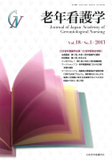Japanese
English
- 販売していません
- Abstract 文献概要
- 参考文献 Reference
抄録
本研究の目的は,居宅生活を送る軽度要介護者の痛みの実態を示し,痛みの有無による日常生活動作,日常生活動作効力感,手段的日常生活動作,社会関連性の違いを比較することである.本調査は,要支援1,2および要介護1で通所リハビリテーションを利用しており,質問に回答可能である高齢者60人に聞き取り調査を実施した.その結果,半数以上が痛みを有しており,腰部,膝部,足,股関節等,移動動作にかかわる部位の痛みであった.対処法として,薬剤の使用や理学的な方法をとっていた.また,痛みなし群,痛みあり群とADL,日常生活動作効力感,IADL,社会関連性の比較において,ADL(FIM)の更衣・上半身の項目と日常生活動作効力感,IADL(老研式活動能力指標)の手段的自立の項目に有意差が認められた.以上のことから,痛みは,居宅軽度要介護者の日常生活動作に対する自信や,日常生活動作の自立度の低下に影響を与える可能性が推察された.今後,痛みによる生活への影響が緩和されることおよび,居宅高齢者の生活の質の向上を目指すためには,痛みへの援助における検討の必要性が考えられた.
The objective of this study was to investigate pain in frail elderly people living at home and to compare the difference between activities of daily living (ADL), self-efficacy for ADL, instrumental ADL (IADL), and social interaction. An interview survey was conducted on 60 older adults using day services with rehabilitation service who are categorized as “Support Required” (level 1 or 2) or “Long-Term Care Level 1” in the Japanese Long-Term Care Insurance system and who were able to answer questions. The results showed that more than half had pain, and the pain was at sites involved in ambulation and transfer, such as the lumbar region, knee, foot, and hip joint. The subjects were using medications and physical methods to cope with the pain. Examination of the relationship to pain also showed significant differences in the Functional Independence Measure (FIM) items related to changing clothes and IADL(TMIG Index of Competence) items of independence of instrumental and in self-efficacy for ADL (p < 0.05). These findings suggested that pain may affect confidence regarding ADL and play a role in reduced ADL independence in frail elderly people living at home. It will be necessary in the future to mitigate the effects of pain on daily living and to examine ways to provide assistance for pain in order to improve the quality of life of older adults who live at home.
Copyright © 2013, Japan Academy of Gerontological Nursing All rights reserved.


